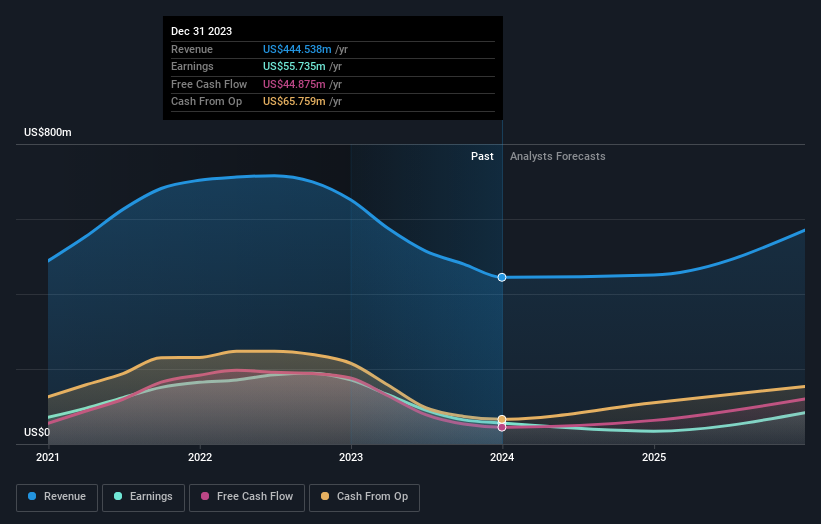Power Integrations, Inc. Just Recorded A 33% EPS Beat: Here's What Analysts Are Forecasting Next
Investors in Power Integrations, Inc. (NASDAQ:POWI) had a good week, as its shares rose 8.1% to close at US$81.54 following the release of its full-year results. It looks like a credible result overall - although revenues of US$445m were what the analysts expected, Power Integrations surprised by delivering a (statutory) profit of US$0.97 per share, an impressive 33% above what was forecast. The analysts typically update their forecasts at each earnings report, and we can judge from their estimates whether their view of the company has changed or if there are any new concerns to be aware of. We thought readers would find it interesting to see the analysts latest (statutory) post-earnings forecasts for next year.
View our latest analysis for Power Integrations
Taking into account the latest results, Power Integrations' seven analysts currently expect revenues in 2024 to be US$450.5m, approximately in line with the last 12 months. Statutory earnings per share are forecast to dive 35% to US$0.63 in the same period. Before this earnings report, the analysts had been forecasting revenues of US$460.0m and earnings per share (EPS) of US$0.68 in 2024. It's pretty clear that pessimism has reared its head after the latest results, leading to a weaker revenue outlook and a small dip in earnings per share estimates.
What's most unexpected is that the consensus price target rose 5.1% to US$86.20, strongly implying the downgrade to forecasts is not expected to be more than a temporary blip. That's not the only conclusion we can draw from this data however, as some investors also like to consider the spread in estimates when evaluating analyst price targets. Currently, the most bullish analyst values Power Integrations at US$100.00 per share, while the most bearish prices it at US$73.00. There are definitely some different views on the stock, but the range of estimates is not wide enough as to imply that the situation is unforecastable, in our view.
Of course, another way to look at these forecasts is to place them into context against the industry itself. We would highlight that Power Integrations' revenue growth is expected to slow, with the forecast 1.3% annualised growth rate until the end of 2024 being well below the historical 8.0% p.a. growth over the last five years. Compare this against other companies (with analyst forecasts) in the industry, which are in aggregate expected to see revenue growth of 16% annually. So it's pretty clear that, while revenue growth is expected to slow down, the wider industry is also expected to grow faster than Power Integrations.
The Bottom Line
The biggest concern is that the analysts reduced their earnings per share estimates, suggesting business headwinds could lay ahead for Power Integrations. On the negative side, they also downgraded their revenue estimates, and forecasts imply they will perform worse than the wider industry. We note an upgrade to the price target, suggesting that the analysts believes the intrinsic value of the business is likely to improve over time.
With that said, the long-term trajectory of the company's earnings is a lot more important than next year. We have forecasts for Power Integrations going out to 2025, and you can see them free on our platform here.
However, before you get too enthused, we've discovered 2 warning signs for Power Integrations that you should be aware of.
Have feedback on this article? Concerned about the content? Get in touch with us directly. Alternatively, email editorial-team (at) simplywallst.com.
This article by Simply Wall St is general in nature. We provide commentary based on historical data and analyst forecasts only using an unbiased methodology and our articles are not intended to be financial advice. It does not constitute a recommendation to buy or sell any stock, and does not take account of your objectives, or your financial situation. We aim to bring you long-term focused analysis driven by fundamental data. Note that our analysis may not factor in the latest price-sensitive company announcements or qualitative material. Simply Wall St has no position in any stocks mentioned.

